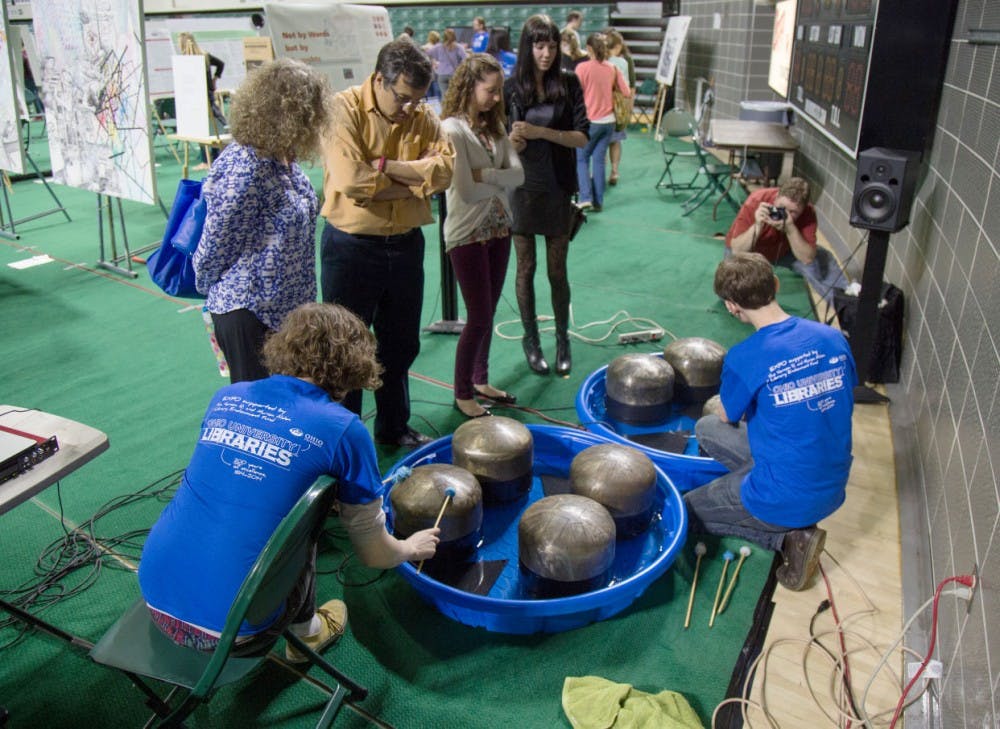About 570 students from many different OU departments attended Thursday’s Student Expo to showcase their research.
From e-books on the Hindi language to car-mounted cameras, the Ohio University Student Expo showcased many student innovations.
Nearly 600 students, both graduate and undergraduate, gathered Thursday at The Convo in divided groups based on their areas of study.
“Presenters come from all disciplines on campus,” said Sarah Conley-Ballew, a student expo coordinator. “Everyone has a different reason. Some people are required to for their degree. Some do it for the money; some are just interested.”
{{tncms-asset app="editorial" id="08a00213-a066-5508-8370-b867c42fb2d4"}}
Students could elect to have their presentations judged and put in the running for a prize or just displayed for people to see.
First place in each session received a prize of $200 and second place received $100. Criteria for judging included the attractiveness of the presentation and clarity of the methodology, results or conclusions of the presentation. Conley-Ballew said that the judges differ by department and have backgrounds in the various disciplines they judge.
One of the projects featured was an e-book created by Bhakti Shah, an international graduate student studying linguistics. Shah, who also teaches a course in Hindi at OU, created the e-book for her students to help them practice the sounds of the Hindi language.
“I have such a passion for teaching,” Shah said. “And I love it when students have the same passion.”
Juliette Eyen, a senior studying history and psychology, showcased her presentation on women on the frontier at the expo. Her presentation focused on a paper she wrote for a history class and used diary excerpts from women to show their experiences on the frontier.
“I try to bring a woman’s voice and perspective to all my classes,” Eyen said.
{{tncms-asset app="editorial" id="c9eded2a-1272-58c0-8c0c-f8eb6e9dc8ad"}}
Eyen was not required to present for a class, but said she was participating because it was something she was simply interested in.
William Adams, a second-year grad student studying engineering, showcased his research on utilizing cameras to drive a car. His research and presentation focused on the mathematics of a camera that could tell where the lines on the road are, even when they are covered with snow or rain.
“90 people a day die from auto accidents,” Adams said. “It’s something we could definitely do something about.”
@taymaple
tm255312@ohio.edu






